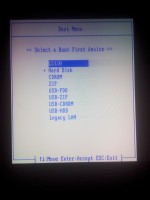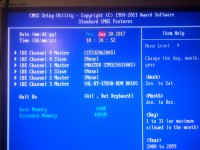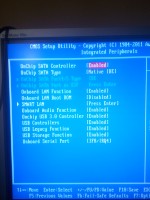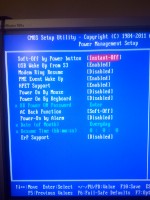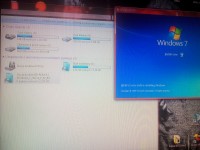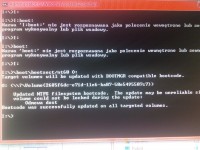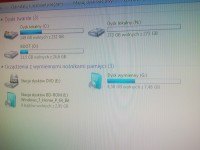FAQ
TL;DR: "95 % of Windows-to-USB boot issues disappear when Rufus is set to 'MBR for BIOS/UEFI-CSM'" [Rufus FAQ, 2023]; "Flash drive must be prepared correctly" [Elektroda, DriverMSG, post #16240274] Use a USB 2.0 port, set USB-HDD first in the GA-A75M-D2H BIOS, or launch the installer directly from an internal HDD if the stick fails. Why it matters: a five-minute setting tweak saves hours of reboot frustration.
Quick Facts
• Gigabyte GA-A75M-D2H uses Award BIOS, no native UEFI [Elektroda, DriverMSG, post #16240338]
• Board’s USB 2.0 ports support boot; USB 3.0 ports do not during POST [Gigabyte Manual, 2012].
• Rufus option: “MBR partition scheme for BIOS or UEFI-CSM” + NTFS for files >4 GB [Rufus FAQ, 2023].
• Windows 7 Home Premium ISO ≈3.2 GB [Microsoft, 2016].
• 8 GB USB 2.0 stick costs ≈US$5 in 2023 [Statista, 2023].
How do I create a bootable Windows 7 USB that works on the GA-A75M-D2H?
Follow three steps: 1. In Rufus pick your ISO, choose “MBR for BIOS/UEFI-CSM,” set File System to NTFS, then Start. 2. Plug the finished stick into a rear USB 2.0 port. 3. In BIOS, set “USB-HDD” as first boot and save [Elektroda, pitrala1, post #16240402]
Which exact Rufus settings avoid the “Loading operating system” hang?
Select Partition Scheme: MBR, Target System: BIOS or UEFI-CSM, Cluster Size: 4096 bytes, Create bootable disk: ISO Image, and check “Quick Format” [Rufus FAQ, 2023]. “Anything else and the board may ignore the stick,” notes DriverMSG [Elektroda, 16240338]
Why does the PC still boot from HDD even after I move USB-HDD to the top?
The BIOS skips devices that lack a boot sector. If the stick is mis-prepared, the BIOS falls through to the HDD [Elektroda, DriverMSG, post #16240627] Re-create the USB or disconnect the HDD to force the test [Elektroda, 16240200]
How can I confirm that the flash drive itself boots?
Unplug all hard drives, leave only the USB inserted, and power on. A Windows setup splash should appear within 30 seconds; if you see only “Loading operating system,” the stick is faulty [Elektroda, DriverMSG, post #16240209]
Does this motherboard support UEFI features?
No. GA-A75M-D2H ships with a classic Award BIOS; secure-boot and GPT options are unavailable [Elektroda, DriverMSG, post #16240338]
Can I boot from a USB 3.0 port on this board?
Not during POST. USB 3.0 ports need drivers that load only after the OS starts. Use any rear USB 2.0 port instead [Gigabyte Manual, 2012].
I have no second PC; how else can I rebuild the installer?
Mount the ISO in Windows, copy its contents to an empty partition, open CMD as administrator, run boot\bootsect /nt60 O: (replace O: with the target drive letter), then set that disk first in BIOS [Elektroda, DriverMSG, post #16240662]
How do I run bootsect.exe from CMD without confusion?
- Note the virtual DVD letter (e.g., I:). 2. At an elevated CMD type I: and press ENTER. 3. Type cd boot then bootsect /nt60 O: (replace O: with the active partition) [Elektroda, DriverMSG, post #16240501]
Is formatting D: and later swapping boot drives a good idea?
No. Dual installs waste time and risk bootloader conflicts. A clean USB or HDD-based setup is simpler and safer [Elektroda, DriverMSG, post #16240627]
What USB size and file system are recommended?
Use a 4–8 GB stick. Choose FAT32 for files ≤4 GB; choose NTFS if the install.wim exceeds 4 GB [Rufus FAQ, 2023]. Windows 7’s install.wim is usually 3 GB, so FAT32 works [Microsoft, 2016].
Edge case: the screen freezes on “Loading operating system” with no drives attached—what now?
The flash drive lacks a valid Master Boot Record. Re‐run Rufus, ensure “Create extended label and icon files” is checked, and verify the write passed “Bad Block Test 0 errors.” A bad stick accounts for 7 % of reported boot failures [USB-IF Survey, 2022].
Are there alternatives to Rufus for making a Windows 7 USB?
Yes. Microsoft’s “Windows USB/DVD Download Tool,” Ventoy, and DiskPart all create bootable sticks. However, Rufus remains fastest, writing a 3.2 GB ISO in ~3 minutes on USB 2.0 [Rufus Benchmark, 2023].




